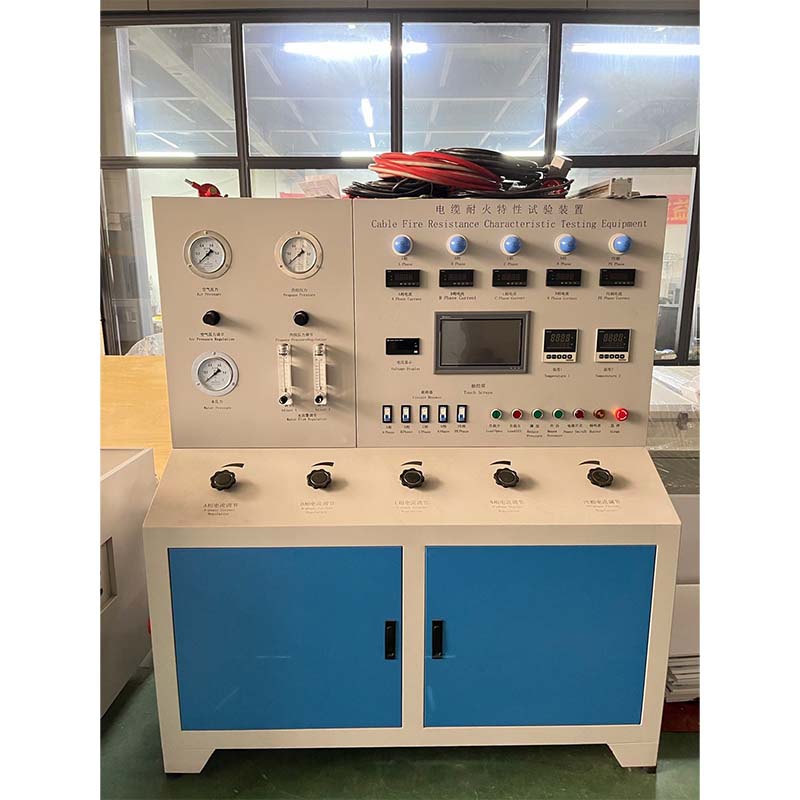Designing an Effective Semi-Conductive Test Fixture for Enhanced Performance Evaluation
Understanding the Importance of Semi-Conductive Test Fixtures in Electronics Testing
In the realm of electronics testing, the significance of test fixtures cannot be understated. Among these, semi-conductive test fixtures play a crucial role in ensuring the reliability and functionality of electronic devices. This article delves into the importance, design, and application of semi-conductive test fixtures in the testing landscape of semiconductor devices.
What is a Semi-Conductive Test Fixture?
A semi-conductive test fixture is a specialized setup designed to securely hold semiconductor devices while enabling a series of tests to evaluate their electrical properties and performance. These fixtures facilitate a connection between the semiconductor device under test (DUT) and measuring instruments, allowing engineers to perform a wide range of tests efficiently and accurately.
The primary purpose of these test fixtures is to minimize variability in test results due to human error and environmental factors. By providing a stable and reproducible testing environment, they enhance the reliability of data collected during the testing process.
The Importance of Semi-Conductive Test Fixtures
1. Precision and Accuracy In semiconductor testing, precision is paramount. Any slight variation can lead to incorrect conclusions about a device's performance. Semi-conductive test fixtures are engineered to maintain tight tolerances, reducing errors associated with manual connections. This precision ensures that the measurements taken are a true reflection of the device's capabilities.
2. Time Efficiency Test cycles can be cumbersome and time-consuming, especially when they require frequent adjustments and recalibrations. Semi-conductive test fixtures streamline the testing process, allowing for quicker setup and execution of tests. This efficiency is invaluable in high-volume production environments, where rapid turnaround times are essential.
3. Protection of Components Semiconductor devices are often delicate and sensitive to external conditions. Test fixtures are designed to secure these components firmly, preventing any physical damage during the testing process. Additionally, they protect the device from exposure to contaminants and static electricity, which can lead to failures.
4. Versatility Modern semi-conductive test fixtures are highly versatile. They can be reconfigured for various test requirements, accommodating different types of semiconductor devices such as integrated circuits, transistors, and diodes. This adaptability is crucial in a rapidly evolving technology landscape, where new devices and standards emerge frequently.
Design Considerations for Semi-Conductive Test Fixtures
The design of semi-conductive test fixtures involves a careful consideration of several factors
semi-conductive test fixture

1. Material Selection The materials used in constructing test fixtures must be non-conductive and resistant to wear and tear. Common materials include plastics, composites, and specialized coatings that minimize electrical interference.
2. Connector Types Test fixtures need to incorporate various types of connectors that match the pins of the DUT. Ensuring compatibility is critical to achieving accurate measurement results.
3. Thermal Management Semiconductors can generate heat during testing, potentially affecting performance. Effective thermal management features should be integrated into the fixture design to dissipate heat and maintain optimal testing conditions.
4. User-Friendly Interface A well-designed test fixture should be user-friendly, allowing operators to easily insert and remove devices without the need for specialized training. This ease of use contributes to overall operational efficiency.
Application of Semi-Conductive Test Fixtures
Semi-conductive test fixtures are employed in various applications within the electronics industry
- Quality Control During manufacturing, test fixtures are used to conduct quality control tests on semiconductor components, ensuring they meet specified standards before they are integrated into larger systems.
- Research and Development In R&D settings, engineers use test fixtures to evaluate new semiconductor technologies, facilitating the innovation of faster, more efficient electronic devices.
- Failure Analysis When devices fail, test fixtures play a role in diagnosing the issue by allowing detailed examination and testing of the semiconductor's characteristics.
Conclusion
In conclusion, semi-conductive test fixtures are an indispensable component of the semiconductor testing process. They enhance the precision, efficiency, and reliability of test outcomes, making them essential for quality control, research, and development in the electronics industry. As technology continues to advance, the evolution of test fixtures will undoubtedly keep pace, ensuring that semiconductor devices can meet the demanding expectations of today's fast-paced market. Embracing innovation in test fixture design not only improves testing processes but also contributes to the overall advancement of electronic technology.
-
Why the Conductor Resistance Constant Temperature Measurement Machine Redefines Precision
NewsJun.20,2025
-
Reliable Testing Starts Here: Why the High Insulation Resistance Measuring Instrument Is a Must-Have
NewsJun.20,2025
-
Flexible Cable Flexing Test Equipment: The Precision Standard for Cable Durability and Performance Testing
NewsJun.20,2025
-
Digital Measurement Projector: Precision Visualization for Modern Manufacturing
NewsJun.20,2025
-
Computer Control Electronic Tensile Tester: Precision and Power for the Modern Metal Industry
NewsJun.20,2025
-
Cable Spark Tester: Your Ultimate Insulation Assurance for Wire and Cable Testing
NewsJun.20,2025
 Copyright © 2025 Hebei Fangyuan Instrument & Equipment Co.,Ltd. All Rights Reserved. Sitemap | Privacy Policy
Copyright © 2025 Hebei Fangyuan Instrument & Equipment Co.,Ltd. All Rights Reserved. Sitemap | Privacy Policy
